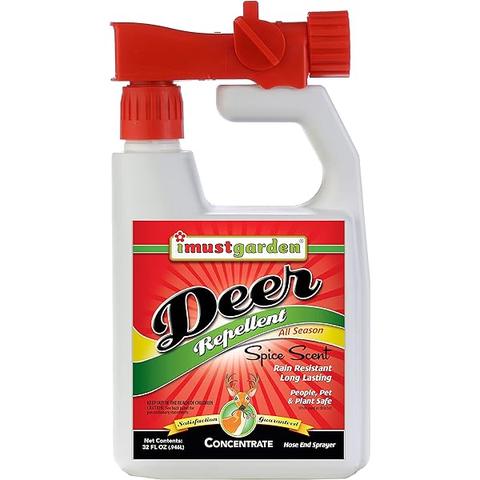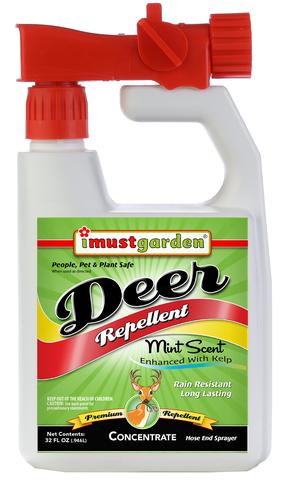Are you tired of watching your hard work disappear overnight, nibbled to shreds by hungry deer? It’s a common frustration for gardeners, and the sight of your precious plants reduced to mere stalks can be disheartening. But fear not, fellow gardener! You don’t have to resign yourself to a deer-dominated garden.
This guide, designed for the outdoor enthusiast and honed by years of experience, will equip you with the knowledge and strategies to effectively deter deer from your garden. From simple fencing techniques to more creative solutions, we’ll dive into the world of deer-proofing and provide you with the tools you need to reclaim your garden.
Understanding the Enemy: Deer Behavior and Preferences

To effectively combat deer, you must first understand their motivations. Deer are primarily driven by hunger, especially in the winter months when their usual food sources become scarce. They are also drawn to the scents of certain plants, particularly those with sweet, fruity aromas.
Deer are opportunists, meaning they’ll explore any easily accessible food source. They are also highly visual creatures, easily deterred by movement and changes in their environment. Understanding these instincts is crucial for implementing effective deterrents.
The Ultimate Defense: Fencing Your Garden
A solid fence is often the most reliable way to keep deer out of your garden. The key is to create a barrier they can’t jump, crawl under, or push through.
Fence Height and Material
- Height: A minimum of 8 feet high is generally recommended, as deer can jump surprisingly high.
- Material:
- Solid fencing: Wood, metal, or vinyl are all viable options.
- Wire fencing: Choose a strong gauge wire mesh that deer can’t push through.
- Foundation: Securely bury the bottom of your fence at least 6 inches deep to prevent them from digging under.
Additional Tips for Fence Effectiveness
- Angle the top: A slight outward angle at the top of the fence makes it harder for deer to jump over.
- Overhang: Extend the fencing a foot or two over the top, creating an overhang that discourages deer from jumping.
- Securely fastened: Ensure all fence panels are firmly attached to posts and the foundation is sturdy to prevent deer from forcing their way through.
Beyond Fencing: Alternative Deer Deterrents

While fencing is the most effective long-term solution, alternative methods can also be useful for supplementing your defense.
1. Scent and Visual Deterrents
- Scents: Deer are repelled by strong scents, such as those from predator urine, garlic, pepper spray, and even human hair.
- Urine-based repellents: Available commercially, they can be quite effective, but require reapplication after rain.
- Homemade sprays: Combine garlic, pepper, and water for a pungent repellent.
- Human hair: Scatter a few handfuls of hair around your garden.
- Visual Deterrents:
- Motion-activated sprinklers: These sprinklers startle deer with a blast of water whenever they approach.
- Shiny objects: Hanging reflective objects, like aluminum foil or old CDs, can create a disorienting visual effect.
2. Plant Selection
Deer tend to avoid certain plants, making them valuable for your garden.
- Deer-resistant plants: Consider incorporating these into your garden:
- Herbs: Lavender, rosemary, thyme, and sage
- Flowers: Marigolds, zinnias, daffodils, and peonies
- Vegetables: Onions, garlic, chives, and leeks
- Shrubs: Boxwood, holly, and barberry
3. Physical Barriers
- Netting: Use fine-mesh netting to cover vulnerable plants, such as young trees or seedlings.
- Row covers: These lightweight fabrics protect crops like lettuce, tomatoes, and spinach.
- Other obstacles: Place branches, stones, or other obstacles around your garden to deter deer.
Tips for Effective Deer Deterrence
- Consistency: The key to success is consistent application of your deterrents.
- Rotation: Rotate the types of repellents you use to prevent deer from becoming accustomed to a single scent.
- Observation: Pay attention to which areas your garden is most vulnerable and focus your efforts there.
- Don’t give up: Deer are persistent, so don’t be discouraged if your first efforts aren’t entirely successful. Continue experimenting until you find the right combination of methods to protect your garden.
Conclusion

Deer in your garden can be a frustrating challenge, but it’s not an insurmountable one. By understanding deer behavior and employing the right methods, you can effectively deter them and enjoy a flourishing garden free from unwelcome nibblers. Remember, patience and consistency are key!
**Share your deer-proofing experiences in the comments below! We’d love to hear about what works best for you. **






![Air gun 101: The differences between .177 & .22 – Which jobs they do best ? [Infographic]](https://airgunmaniac.com/wp-content/uploads/2020/09/g44-218x150.jpg)






































